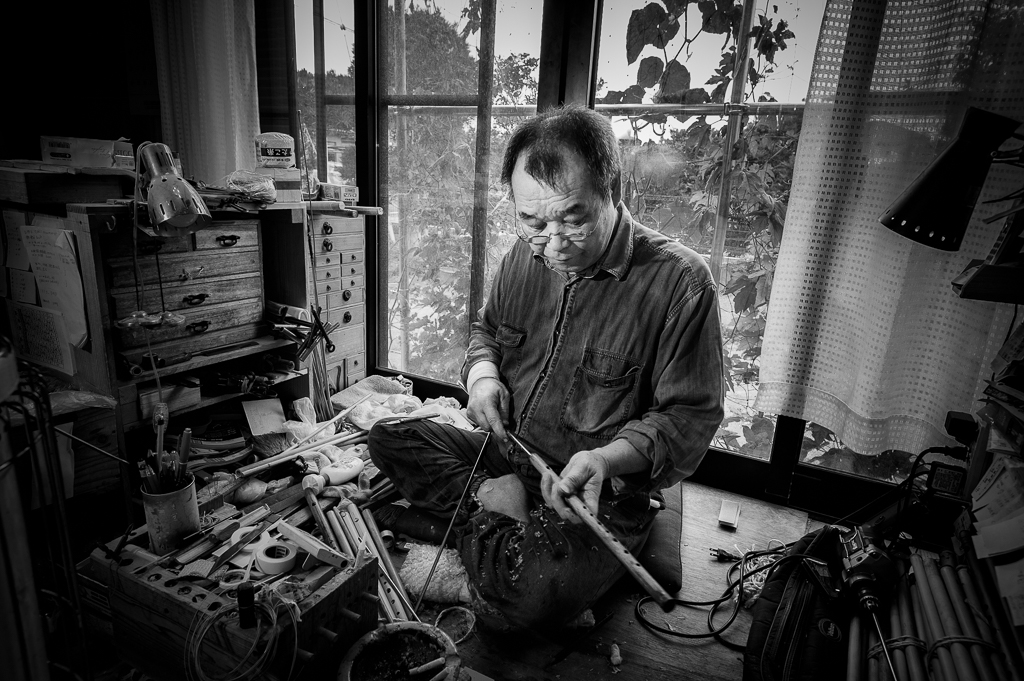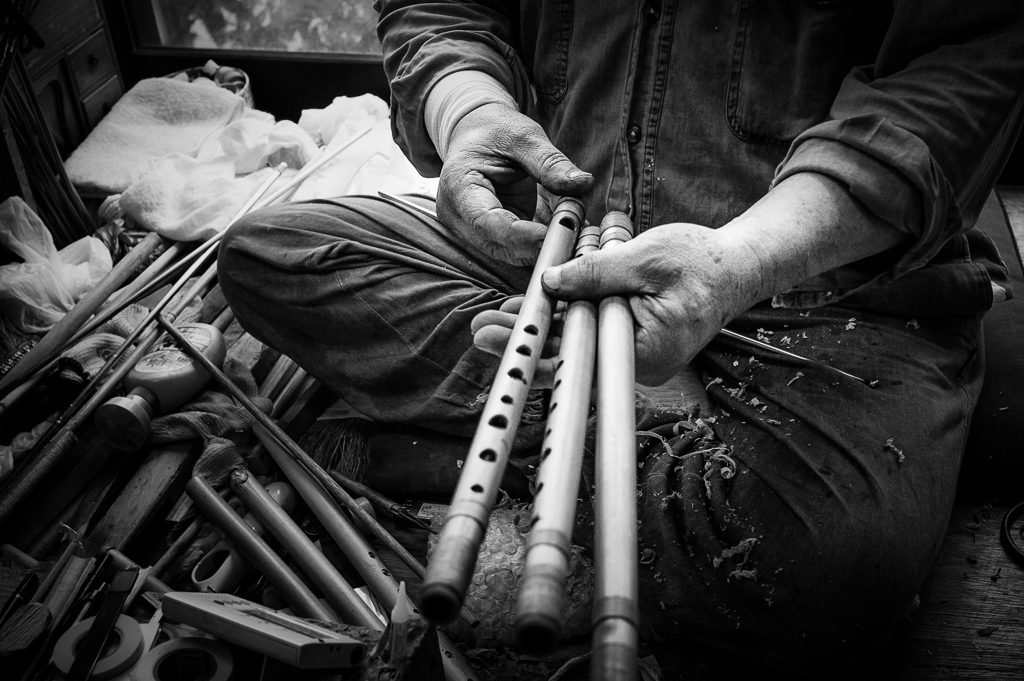Ranjo
Ranjo, master flute maker of the Chiba prefecture, Japan.
I want you to go beyond the words. Remember the last time you heard a song that transfixed you, separating you from the world for a moment, drowning you in happiness, or perhaps in that sweet, sweet sorrow, or simple and pure peace? It might have taken but a second, and when you came back to the world you were a little bit different from before. It was through the skill and the genius of the artist that you got there, it was their magic.

But magic, as you know, doesn’t just come out of nowhere. You were not enjoying one artist, but many. Among those hundreds of hours of dedication, discipline, countless little triumphs and failures are, also, other people. Teachers, advisors, contributors, friends, inspirational figures, and professionals who supported your artist and her vision along the way. Ranjo is one of these unknown artists, an inspiration that often sits behind the scenes in the world of traditional Japanese (and international) music. He crafts the tools that enable some of the best wind music players in the world to perform their magic. And he has been doing so for about forty years.
Ranjo was already building bamboo flutes for his friends when he was a third-grade student; however, it wasn’t until he decided to follow this road professionally that one of his major contributions to the world of wind musical instruments would take place. At that time, traditional Japanese flutes did not follow a strict tuning: It was up to the musician to use his skill to coerce the instrument into playing the right tones, and even then, festivals only required a handful of notes. Ranjo did a curious thing: He started to listen to (and play) foreign instruments, and in doing so, he identified the current disadvantages and design defects of the traditional Japanese bamboo flutes. He decided these were obstacles that could be overcome. And that was exactly what he did. Ranjo created a new generation of bamboo flutes that could rival their western counterparts, effectively bringing Japanese flutes to the world’s musical stage.
I met him at his little workshop in a small town close to Tokyo.
Surrounded by projects (finished and in progress) he let me hop around awkwardly with my camera as he proceeded to create beautifully sounding instruments out of bamboo. His working techniques are unique, and even though very few people rival him in skill, he is always evolving, looking for better ways to construct flutes that, already, are some of the best in the world. Ranjo is never completely satisfied.
Every year, improved versions of his instruments find their way to the hands of the best musicians and a good number of eager students. And this is a good thing. Those who know him feel the responsibility of becoming better players. And it is because of people like him that any given day, without warning, you may hear a tune that will resonate with your soul, and you too will change once more, and perhaps become a better artist yourself.
